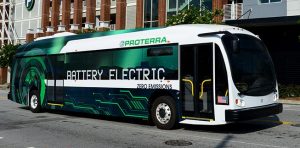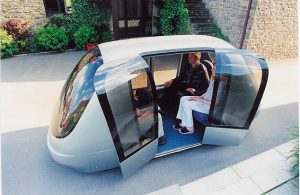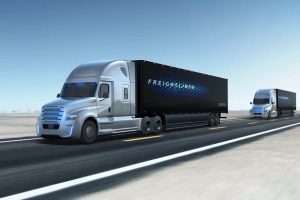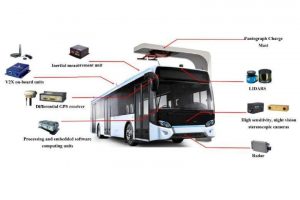The development of driver-less cars has automatically led to using the same technology in other forms of transport like buses, cargo carriers, inter-city buses, office fleet carriers. Autonomous vehicles will have a major impact on urban transportation. The politicians and urban planners have embraced this technology so whole-heartedly that whole cities in USA and Singapore have big plans for the future.
San Francisco, Austin, Columbus, Denver, Kansas City, Pittsburgh and Portland have made extensive strides in integrating autonomous car technology into their transportation network. They have plans to introduce buses and neighborhood shuttles in the city, colluding with the Department of Transportation.
In Milton Keynes, UK they plan to introduce, low speed electric pods which will transport people between the train stations and city center.
Singapore partnering with MIT, has already set up testing zones for self-driving cars.

Picture taken from www.atsltd.co.uk website
In Wageningen (Netherlands) a project is already underway to provide self-driving Wepods in under-served areas.
In Wuhu, China self-driving cars and buses will be introduced in the next 5 years.
In the UK they are planning to test a group of lorries called Platoons to move in a convoy from one city to another. A stretch of road near Carlisle has been earmarked for this. The driver in the lead vehicle will control all functions like steering, acceleration and braking even though they would have drivers in the other drones as a safety precaution for emergencies.This would considerably improve fuel consumption by reducing drag. These drones may also bring greater efficiency speed and safety to transportation. There might be logistical problems initially but, once the technology is accepted in principle, infrastructure would have to be provided accordingly.
The driver in the lead vehicle will control all functions like steering, acceleration and braking even though they would have drivers in the other drones as a safety precaution for emergencies.This would considerably improve fuel consumption by reducing drag. These drones may also bring greater efficiency speed and safety to transportation. There might be logistical problems initially but, once the technology is accepted in principle, infrastructure would have to be provided accordingly.
Technology is going to transform over the next 2 decades towards this endgame .The driver-less revolution will transform not only the urban spaces but, also the routes between them. Take for example traffic lights which are literally a pain, as the settings of the traffic lights may not coincide with the actual requirements on the ground and you have to wait endlessly. But in a world where every vehicle has an on-board computer, a well-designed algorithm should inter-act with all the vehicles to provide a wait-free seamless traffic such that in a few years, traffic lights may not be required.
Tesla’s new technology for lane-changing is another landmark in this field. It maintains a certain distance from the neighboring cars both at highway speeds and in the city.
Cameras mounted on the car allow them to park safely and warn drivers about potential impacts.
In a Utopian world, driver-less cars could be put to maximum use. There would be no necessity to own cars. Companies like Uber, Lyft and Ola would provide all the transportation required so that , there is no wastage of cars sitting idle in the garages .This would also decrease and de-congest the traffic in the city as automatically the competition would ensure that , the correct number of cars needed, would be deployed. There would be exceptions off course, as the rich people would have a special fleet of luxury cars at their disposal. But for a majority of people, this technology would be a relief and allow them to concentrate on useful work.
In short, more efficient use of cars would decrease the necessity of using more of them. It would save about 40% of deaths due to accidents. It would help mobility for disabled and elderly people who are limited with their ability to drive. We would save vast areas currently used for parking our cars.

The wireless connection which enables access to your car controlling the brakes, to lights and a bunch of other things also makes it vulnerable to signals from the wrong person thereby creating a security problem. In theory an automated car can be taken over by someone other than the person sitting in it, akin to somebody hacking your computer. Sometimes that is desirable as –imagine you have a heart attack and you need to be re-routed to the hospital, the system should be able to make the change. It is understood that systems would be in place to prevent take-over of cars for illegal reasons.
Again networked cars/lorries/buses could provide data through GPS regarding the exact position of the vehicle –for a family member expecting a person, for a customer expecting a consignment and for numerous similar uses.
Veritably, autonomous vehicles would change the way we live, travel communicate and in short live a better quality of life.

